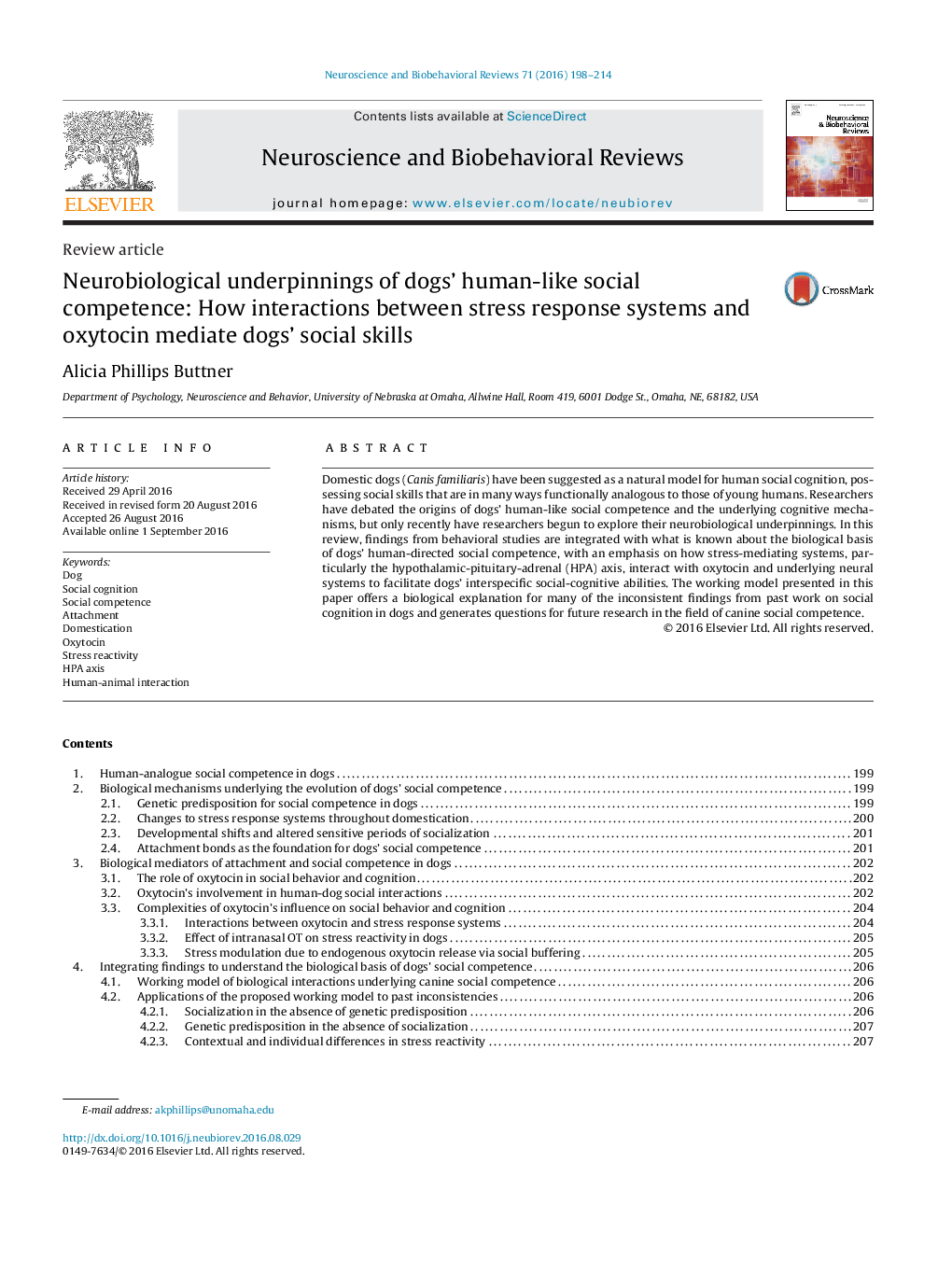| کد مقاله | کد نشریه | سال انتشار | مقاله انگلیسی | نسخه تمام متن |
|---|---|---|---|---|
| 5043742 | 1475299 | 2016 | 17 صفحه PDF | دانلود رایگان |
- Domestic dogs possess social-cognitive abilities analogous to those of humans.
- Domestication reduced stress reactivity and extended sensitive periods in dogs.
- Dogs establish infant-like attachments to humans due to these changes.
- Oxytocin facilitates social behavior potentially by reducing stress reactivity.
- Accounting for activity of stress systems can shed light on dogs' social abilities.
Domestic dogs (Canis familiaris) have been suggested as a natural model for human social cognition, possessing social skills that are in many ways functionally analogous to those of young humans. Researchers have debated the origins of dogs' human-like social competence and the underlying cognitive mechanisms, but only recently have researchers begun to explore their neurobiological underpinnings. In this review, findings from behavioral studies are integrated with what is known about the biological basis of dogs' human-directed social competence, with an emphasis on how stress-mediating systems, particularly the hypothalamic-pituitary-adrenal (HPA) axis, interact with oxytocin and underlying neural systems to facilitate dogs' interspecific social-cognitive abilities. The working model presented in this paper offers a biological explanation for many of the inconsistent findings from past work on social cognition in dogs and generates questions for future research in the field of canine social competence.
Journal: Neuroscience & Biobehavioral Reviews - Volume 71, December 2016, Pages 198-214
